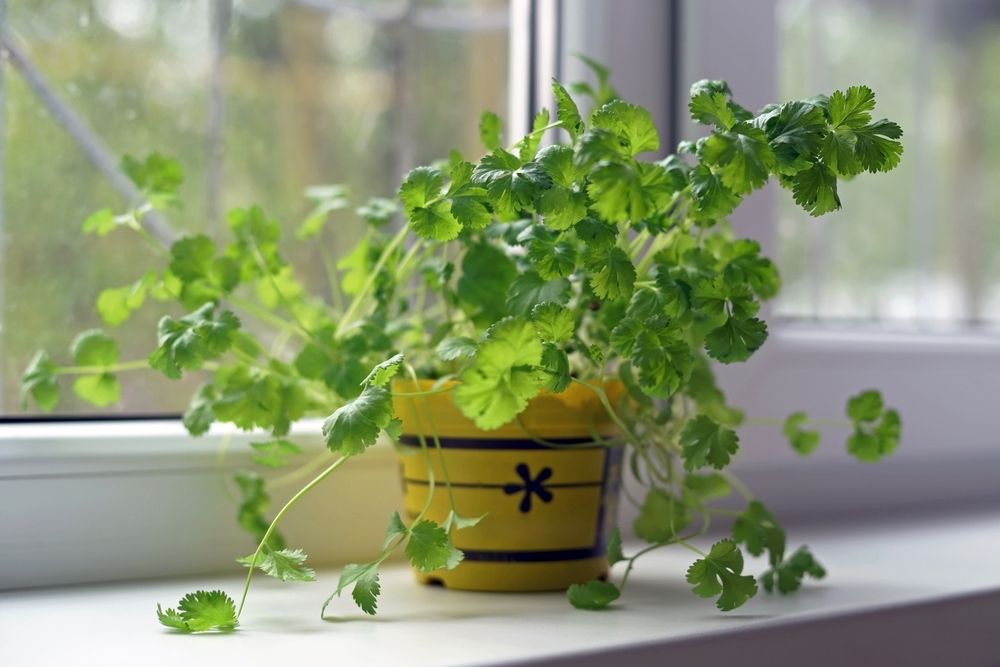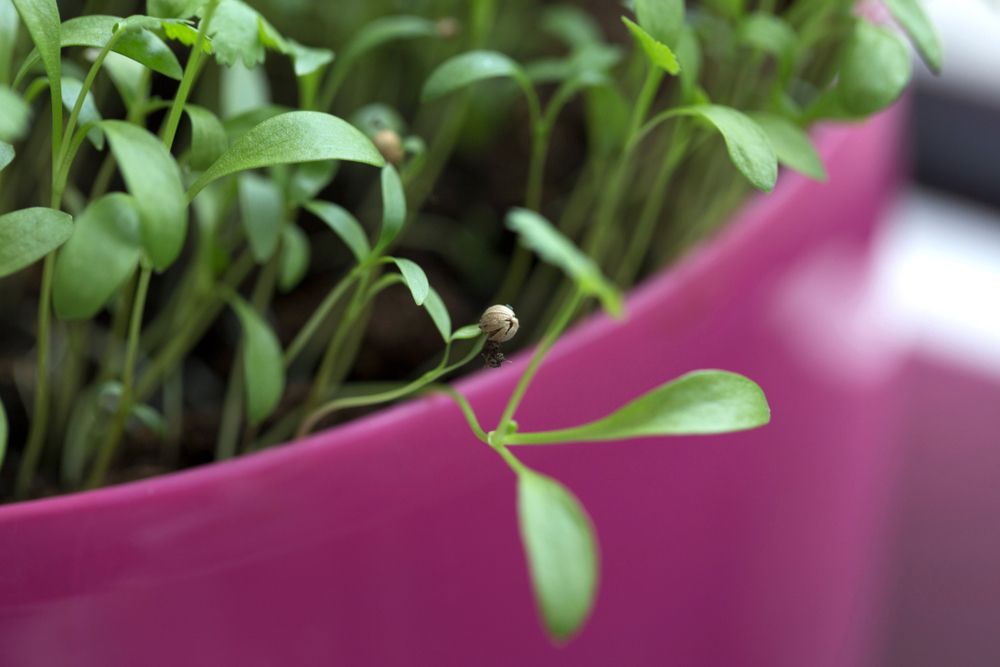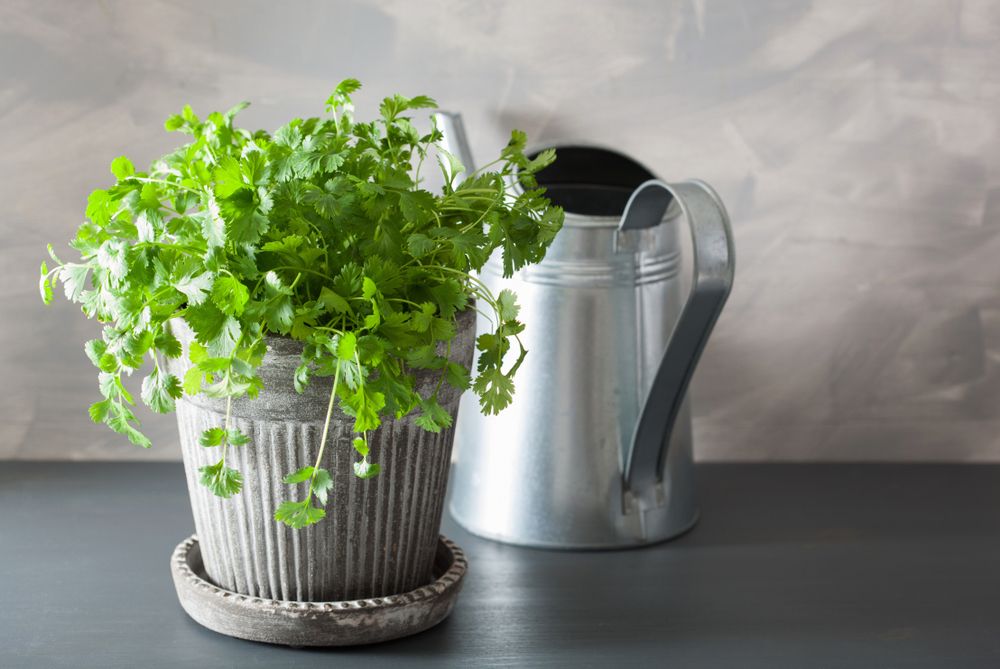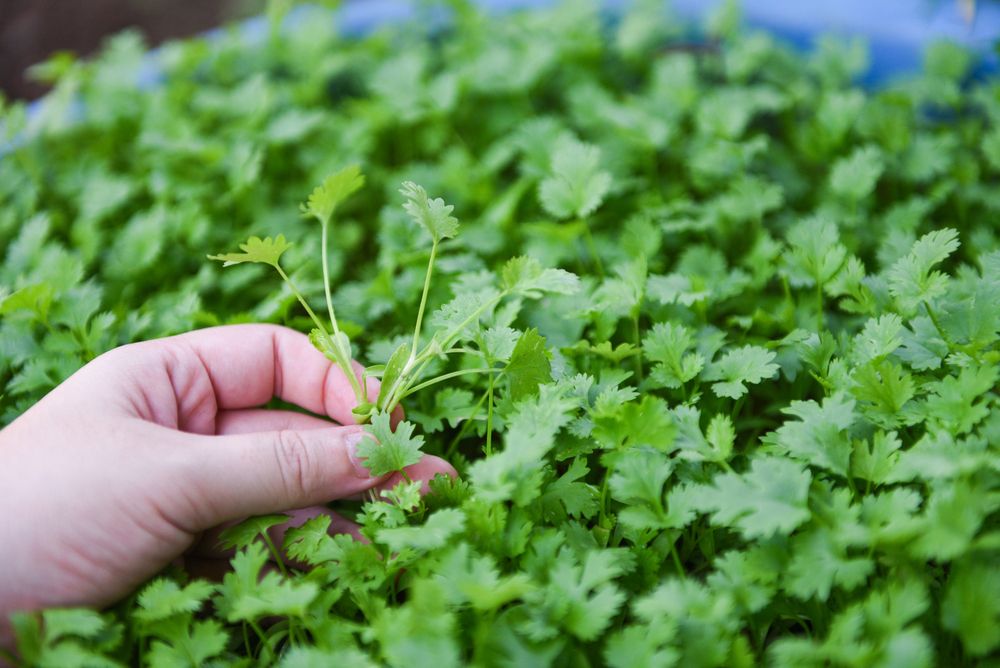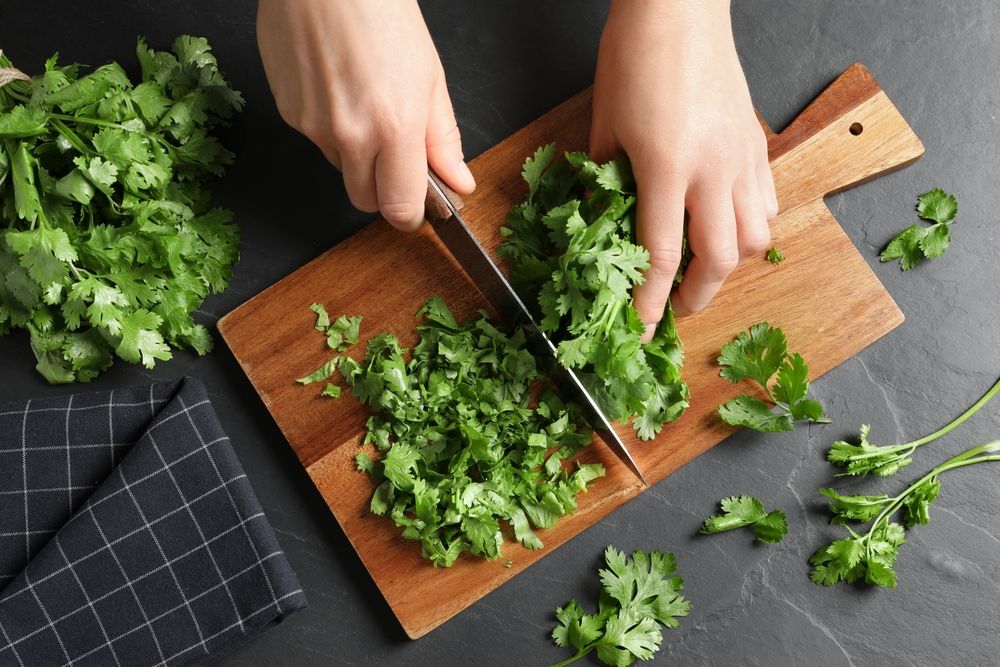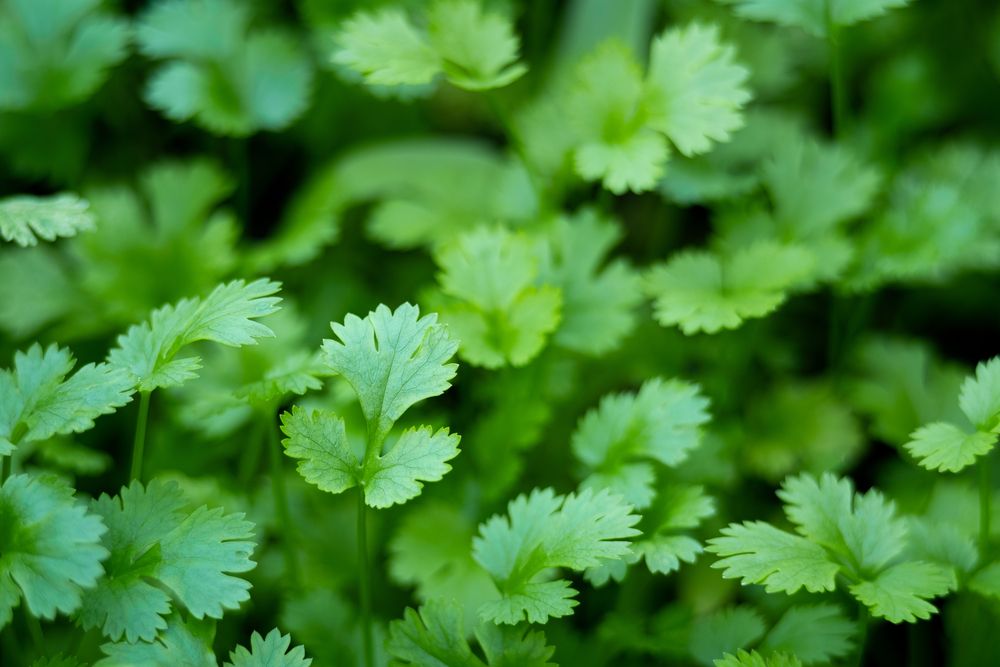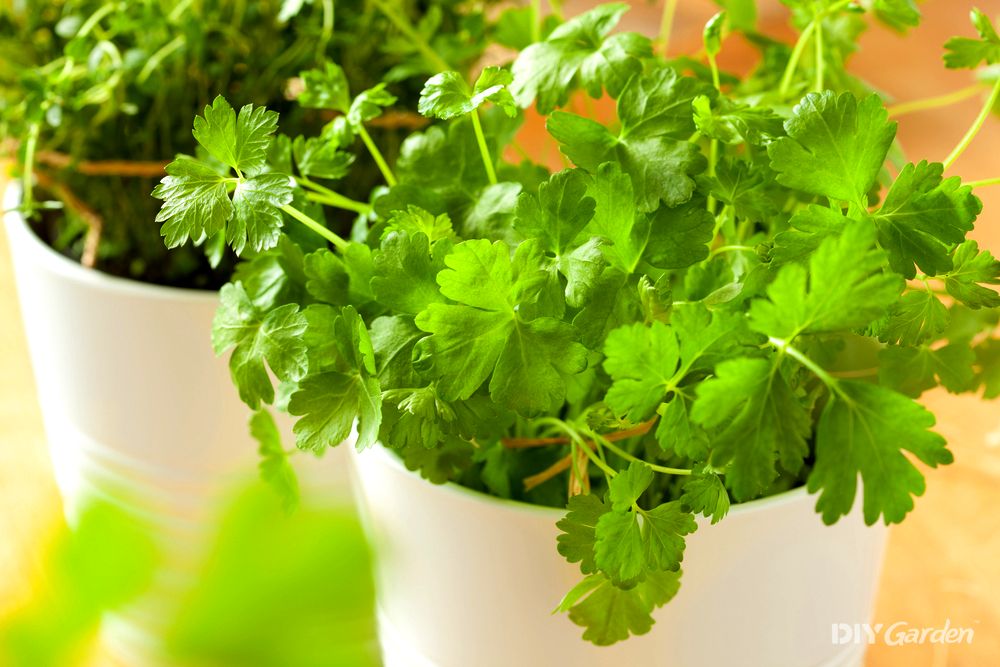
Also known as cilantro or Chinese parsley, coriander is loved for its distinctive citrusy flavour. From its leaves to its seeds, all parts of the plant are edible, making it a herb well worth growing at home.
While some gardeners plant their coriander into the ground, many prefer to grow it in containers. This gives you full control over its growing conditions, resulting in healthy and vigorous plants. Here’s exactly how to grow coriander in pots to ensure an impressive harvest.
Growing Coriander in Pots: A Quick Snapshot
When to Sow – Mar-Sep
When to Plant – Mar-Sep
When to Harvest – Apr-Oct
Spacing – 5-20cm
Depth – 1cm
How to Grow Coriander in Pots at Home
Although relatively easy to grow, coriander can be quite finicky about its growing conditions, especially when compared to other herbs:
Warm Temperatures
In order for a coriander plant to thrive, it needs to be growing in temperatures between 17°C and 28°C.
While coriander will survive in slightly cooler conditions, growth starts to slow down. Once temperatures drop to 13°C, the plant will soon die off. Since it’s an annual rather than a perennial, it won’t grow back again once temperatures heat up.
On the other hand, give it too much heat and this stimulates bolting. As soon as a coriander plant starts to produce flower stalks, its flavour turns bitter.
Full Sun
Coriander plants need full sun in order to grow, even if this is just for a few hours a day. Some varieties will tolerate slightly shadier conditions, but, ideally, aim to give your plants plenty of sunlight.
The exception to this rule is in the height of the summer. Since coriander has delicate leaves that sit atop weak stems, the scorching sun can quickly cause damage. So, during the hottest hours of sunny summer days, move your pots of coriander to a shadier spot.
A Deep Pot
Coriander plants have long taproots, meaning that the deeper your pot, the happier your plants will be. A depth (and width) of around 30cm would suffice, although your plants would definitely appreciate an even larger pot!
In addition to providing plenty of room for those long roots, bigger pots also encourage soil moisture retention, which helps a coriander plant thrive.
How to Grow Pots of Coriander from Seed
Unlike other herbs, coriander doesn’t grow well from cuttings, meaning that the best way to get going with this plant is by sowing seeds. Ideally, these should be sown directly into their final growing space – coriander’s long, sensitive taproot often doesn’t take well to being transplanted.
Fill your chosen pot with a lightweight potting compost, mixing some sand or perlite in to improve drainage. Give the soil some water, so that it’s moist for when you sow your seeds.
Since coriander seeds have a hard coating, many like to speed up germination by pre-soaking or lightly crushing the seeds before sowing. While this can reduce germination time by a few days, it doesn’t make a significant difference and is only worth doing if you’re in a hurry to see seedlings.
Scatter your coriander seeds over the top of your soil and then sprinkle a bit more soil over the top to cover them. Give them a light watering and then place your pot in a spot where it’ll receive temperatures between 18-21°C – this is the optimum range for coriander germination. Ensure that the soil remains consistently moist and you should see seedlings start to appear in about two weeks.
After your seedlings have been growing for a few days, you’ll need to thin them out. If you’re growing coriander for its leaves, give each plant around 4-5cm of space. However, if you’re growing your coriander primarily for its seeds, then each plant would do best with around 15-20cm of space around it.
How to Plant Coriander in a Pot
Most coriander plants available for sale are grown in small pots. If you’ve purchased one of these, then you’ll need to repot it – coriander quickly becomes root bound in a small pot, which leads to its death.
When potting up a coriander plant, be very careful. Its taproot is delicate and even the smallest amount of damage or disturbance could cause the plant to bolt, rendering it useless as a culinary plant.
Prepare its new pot before removing your plant from its current pot. Fill the new pot with soil but leave a space in the middle to sit your plant in. Then, gently squeeze the pot that your plant is in to loosen the roots, before sliding the plant, its roots, and the soil around it out as one piece. Place this into your new pot, cover over the base of the plant with soil, and then water it in well. If the soil sinks after being watered, add a bit more over the top.
How to Care for Potted Coriander
Whether you started with seeds or a purchased plant, once you have your pot of coriander, it’s important to look after it in the correct way if you want to keep it alive and productive for as long as possible:
Watering Coriander in Pots
Coriander likes its soil to be evenly moist, meaning regular watering is a must. However, due to how delicate coriander plants are, you need to be careful when watering them – wet foliage quickly leads to powdery mildew, while overly soaked stems soon rot and break.
Fortunately, since you’re growing coriander in a pot rather than in the ground, you won’t need to water your plants from above. Instead, fill a container with water and sit your pot of coriander into that every few days. As soon as all of the soil in the pot is saturated, remove it from the water.
Feeding Coriander in Pots
Although not a particularly heavy feeder, coriander still benefits from a balanced, all-purpose fertiliser every couple of weeks in the spring and summer. This will help to encourage foliage growth.
However, be careful not to over-fertilise, as this can affect the flavour of the leaves.
Mulching Coriander in Pots
While not strictly necessary, mulching your pots of coriander can help to prolong the plant’s lifespan before it starts to flower. A layer of mulch not only improves moisture retention in the soil, but also keeps the roots cool, both of which coriander plants appreciate.
Straw, shredded leaves, and grass clippings all act as a good mulch for coriander plants. When applying the mulch, be sure to place it a few centimetres away from any coriander stems so that it doesn’t cause the stems to rot.
How to Harvest Coriander
Even if you don’t plan on eating coriander very often, your plant will still need to be pruned/harvested regularly. Start doing so once your plant reaches around 15cm in height. At this stage, it will be established enough to regrow yet young enough for its leaves to be perfectly aromatic, without any of the bitterness that comes from older leaves.
The best way to harvest coriander is by snipping the stem a few centimetres above the crown of the plant. Don’t harvest more than one third of the plant at a time, as it will have a hard time recovering from this.
Once a coriander plant starts to bolt, harvesting usually comes to an end – the leaves become tough and bitter. However, the flowers can then be harvested instead – they’re packed with the same tangy flavour as the leaves.
Alternatively, you could also leave your plants to flower and set seed, and then harvest those coriander seeds for use in the kitchen.
Harvesting Coriander Seeds
Once your plant has finished flowering, it will produce seeds. At first, those seeds will be green. They can be harvested at this stage but will need to be used immediately. If you want to store them, wait for them to turn brown.
To harvest the dried seeds, snip off the entire stem at its base. Place the harvested stems in a warm room on some paper – this finishes off the drying process. Then, shake the seeds off the stem and place them into an airtight container.
How to Store Coriander
While dried coriander seeds are easy to store, fresh green leaves are a little trickier. These are some of the most common options:
- Rinse them, dry them, and then loosely wrap the leaves in paper towels. Place them into a plastic bag (unsealed) and keep this in the fridge. The leaves should stay fresh for over a week
- Flash freeze them on a tray and then place the leaves into a bag once frozen
- Pack leaves into ice cube trays and cover them with oil before freezing. You could also add in other herbs to make your very own infused oil blend
How to Prepare & Cook Coriander
Coriander needs very little preparation. Simply chop up both the leaves and the stems (or the edible flowers) and either cook with them or use them raw as a garnish.
If you’re not familiar with using coriander in the kitchen, here are a few ideas:
- Coriander relish or chutney
- Coriander pesto
- Salsa verde
- Coriander hummus
- A garlic and coriander mix for potatoes and meat
- A coriander and lime mix for poultry and seafood
Common Coriander Problems
Unfortunately, there are quite a few pests and diseases that love to inflict damage on tender coriander plants. Here are a few of the most common to keep an eye out for:
- Powdery mildew – this disease shows itself as a white coating on the leaves of a plant. You’ll also notice that affected coriander leaves look distorted. Since you’ll be harvesting the leaves, avoid fungicide sprays. Instead, dissolve some bicarbonate of soda in some water and spray this onto the leaves to treat them
- Aphids – this pest sucks the sap from plants and, in large numbers, can be fatal. To remove an aphid infestation from your coriander plant, try gently wiping them off the leaves with a damp cloth. Sprays and soaps are available but this could affect the flavour and texture of the leaves, making manual removal the best option
- Bacterial leaf spot – this disease occurs in wet and cool conditions, manifesting as brown or black spots on wet leaves. There’s no cure for this disease, so you should try picking off any infected leaves and safely disposing of them. Adjusting your plant’s growing conditions and watering schedule can help to prevent bacterial leaf spot from spreading
- Early bolting – coriander is highly prone to early bolting. To prevent this, minimise plant disturbance as much as possible, while keeping growing conditions consistent
Popular Coriander Varieties to Grow in Pots
Although coriander plants experience their fair share of problems, growing the right varieties for the conditions that you have to offer will help to ensure healthier and happier plants:
- Confetti – known for its sweeter-than-average leaves, which happen to look more like dill than regular coriander
- Marino – a vigorous variety with a punchy flavour
- Jantar – although the nutty-tasting leaves of this plant don’t grow very large, the seeds that it produces are extremely aromatic
- Cruiser – a new British-bred variety that’s slow to bolt and produces large leaves
- Lemon – a tangy, citrus-scented variety that’s also available as a dwarf plant
Conclusion
Not only is coriander a herb that’s bursting with aroma and flavour, but it also offers up so many health benefits when consumed regularly. Nothing quite beats the refreshing zing of fresh coriander, and while some may find the plant a little tricky to cultivate, growing it in a pot enables you to avoid many of the common pitfalls. Follow the advice above and your coriander plants should remain vigorously productive for several months.
FAQ
Does coriander regrow after cutting?
Yes, so long as your coriander plant is healthy, it will regrow after cutting. It should continue to do so for several weeks, resulting in multiple crops from one plant.
How long do coriander plants last?
The lifespan of a coriander plant depends on the conditions that it’s given. Some start flowering after just three months, while others last for up to six months.
How do I make my coriander bushy?
For a bushy coriander plant, regularly prune away upward growth. This will encourage the production of side shoots, which will give you a fuller and bushier plant.
